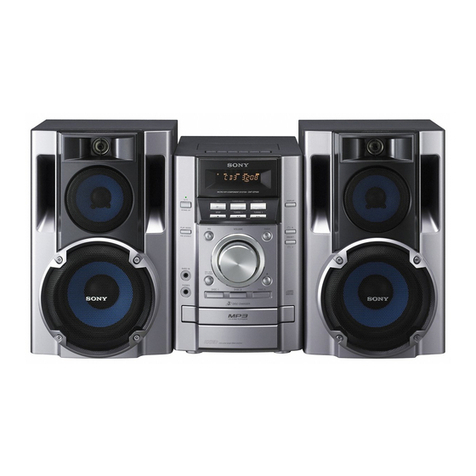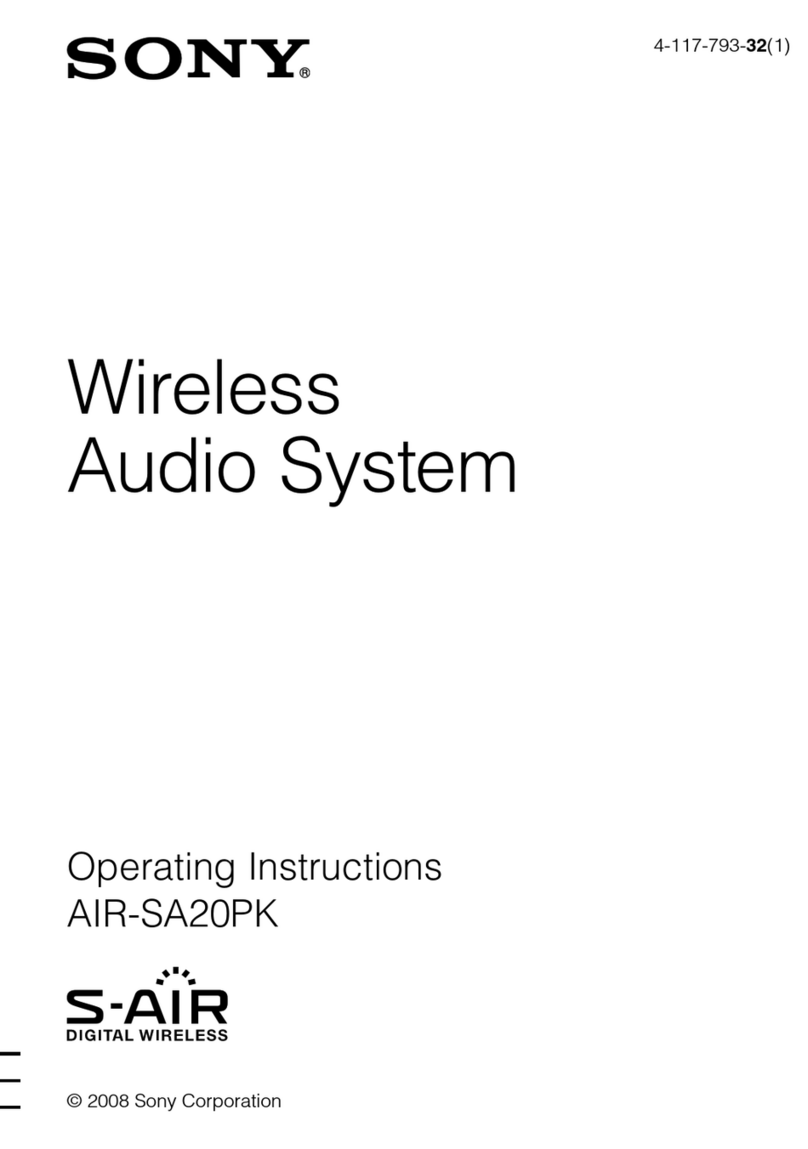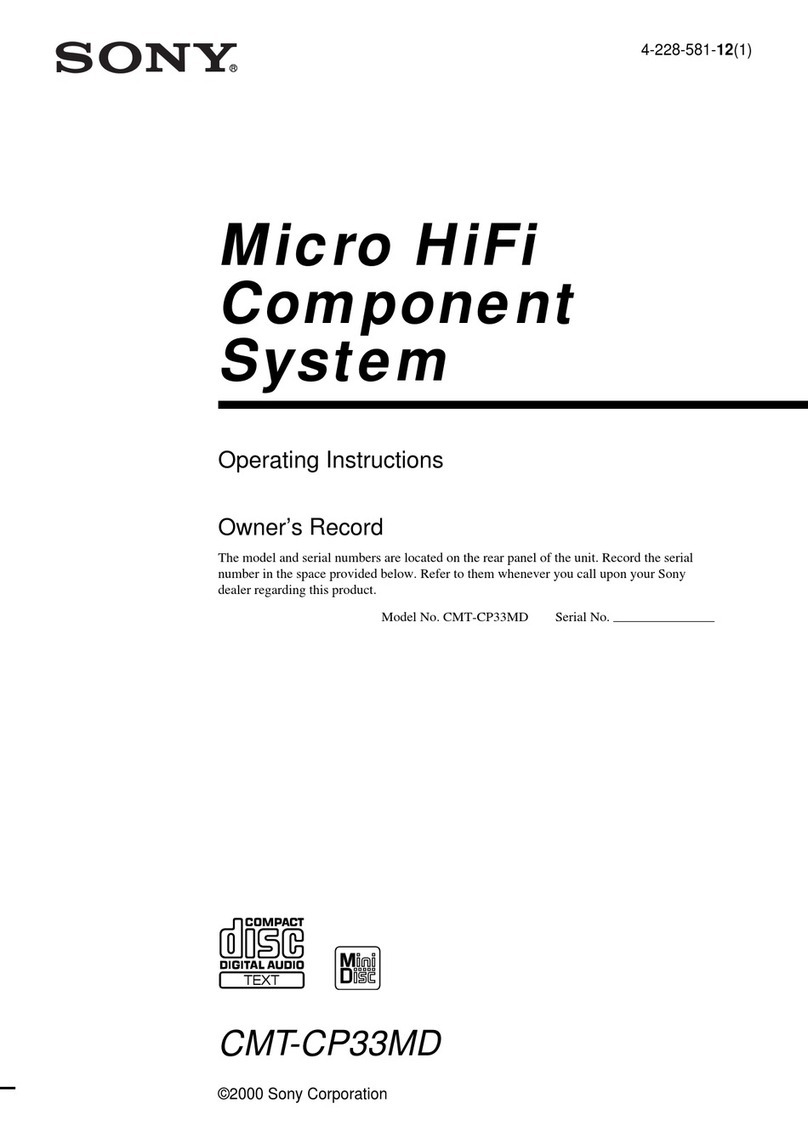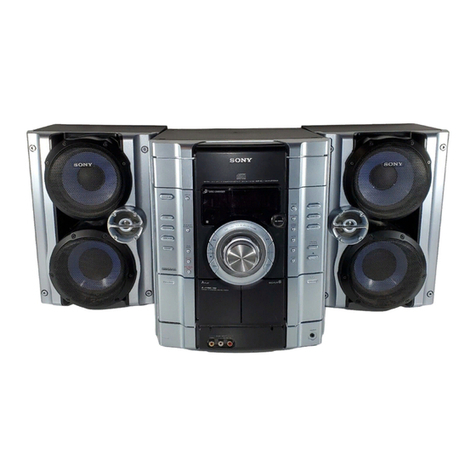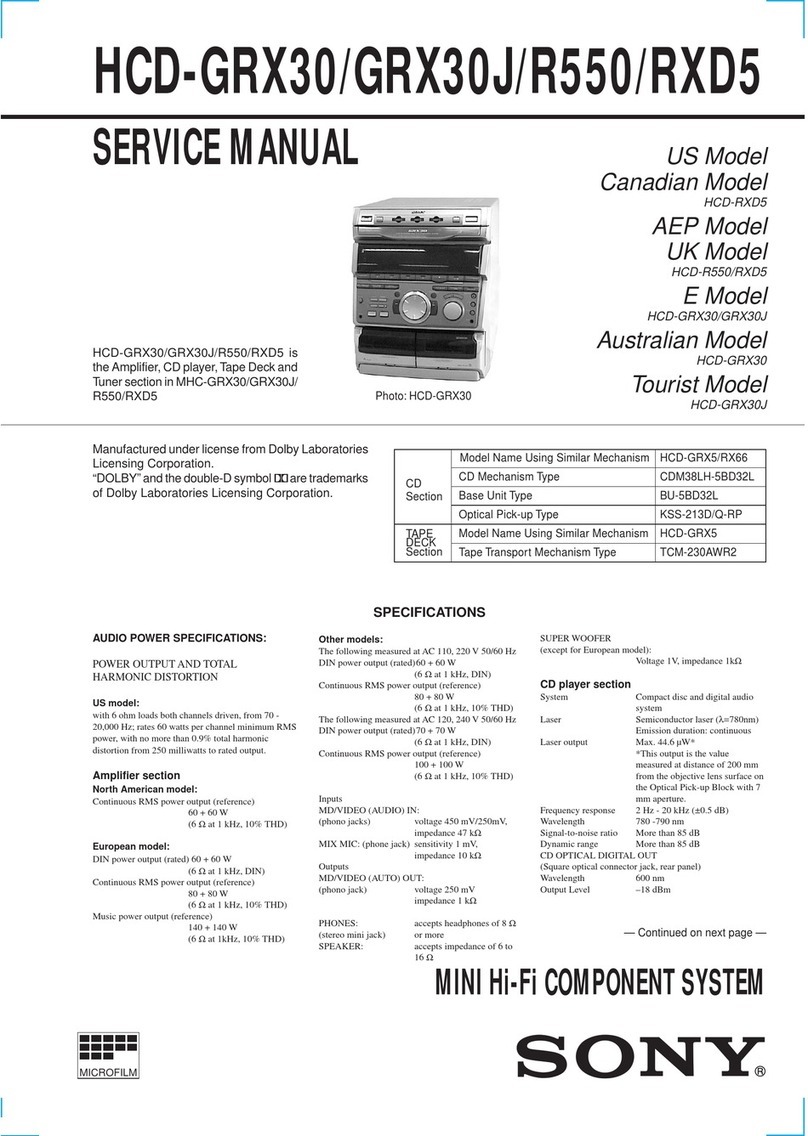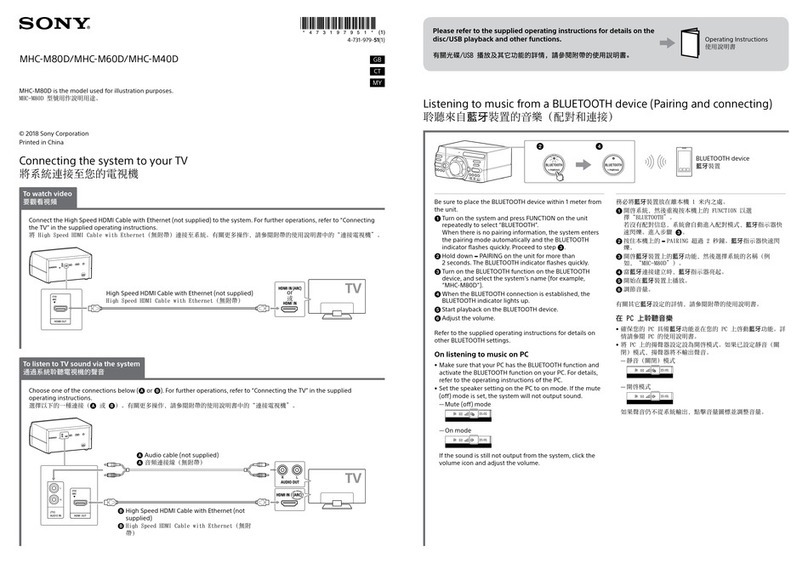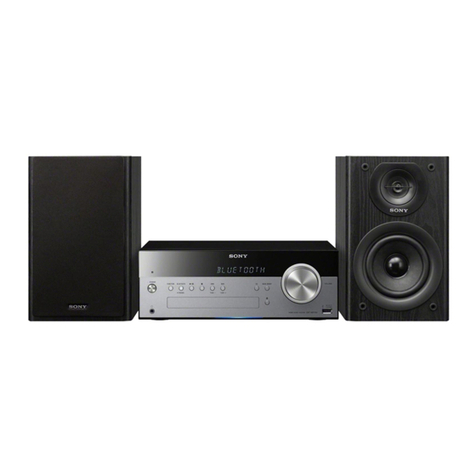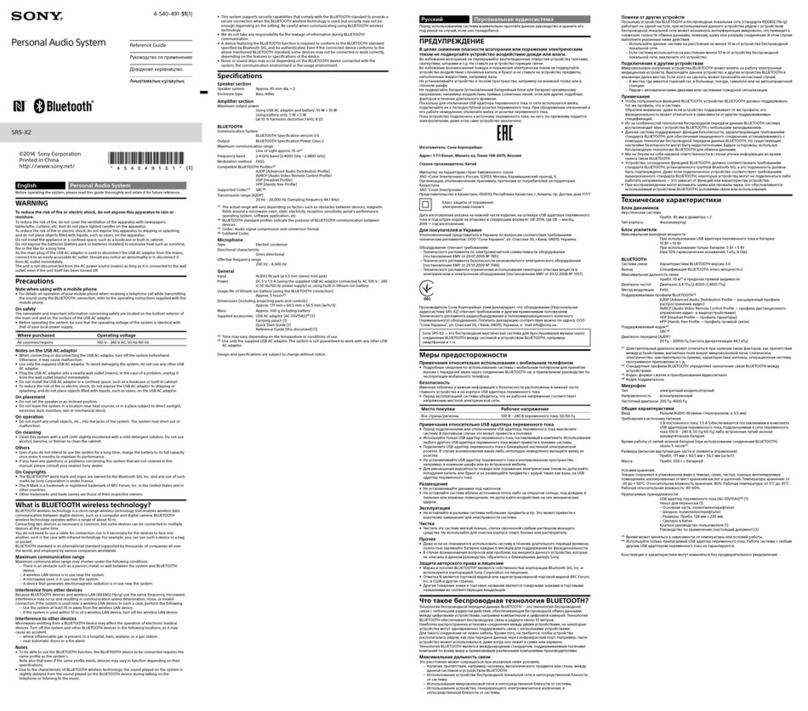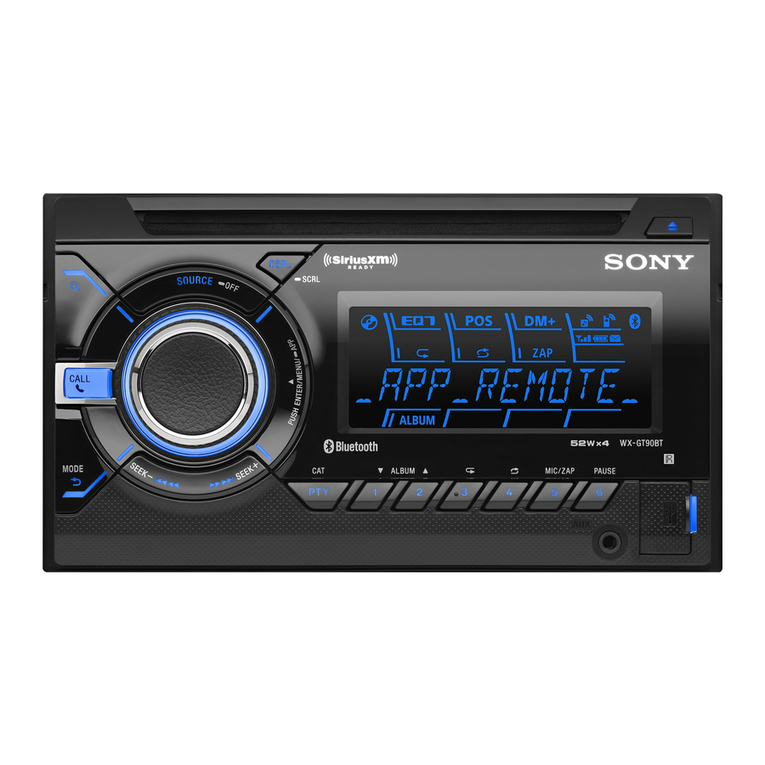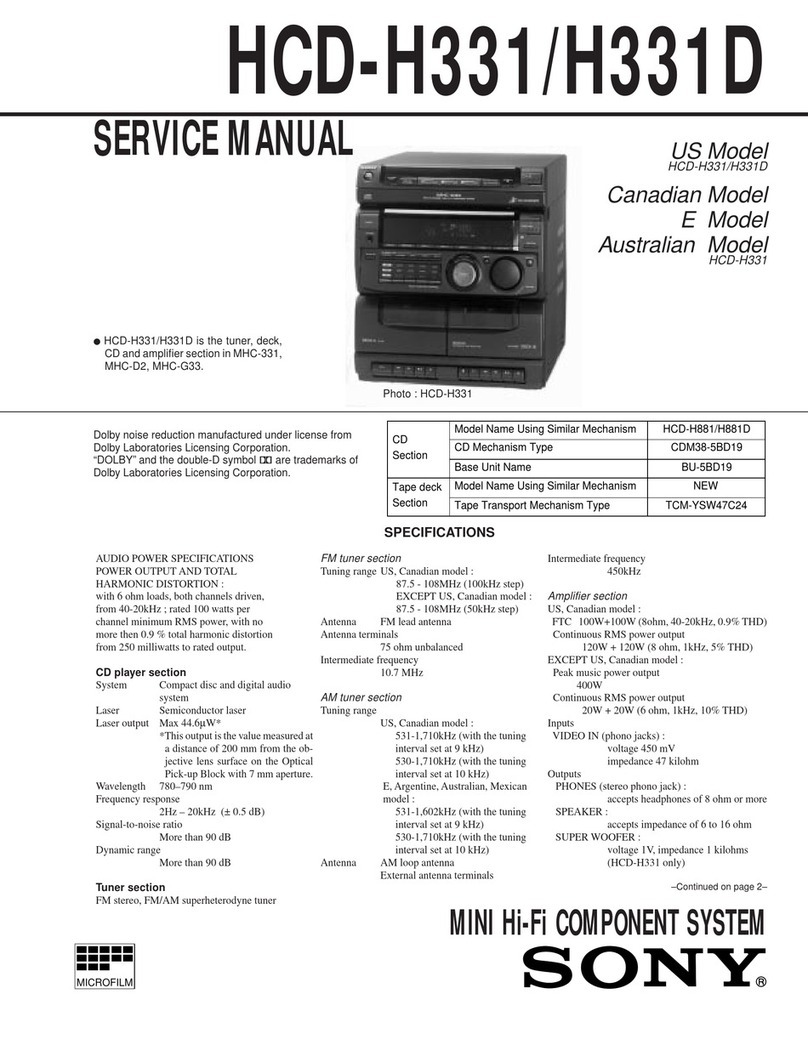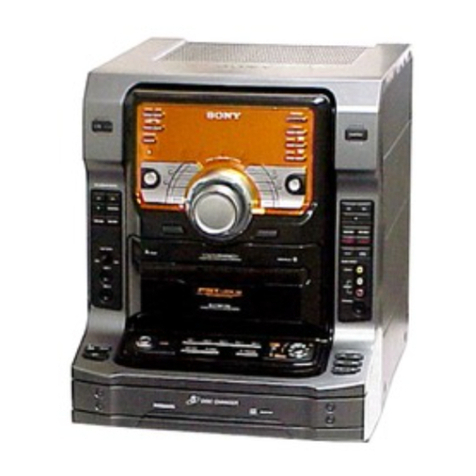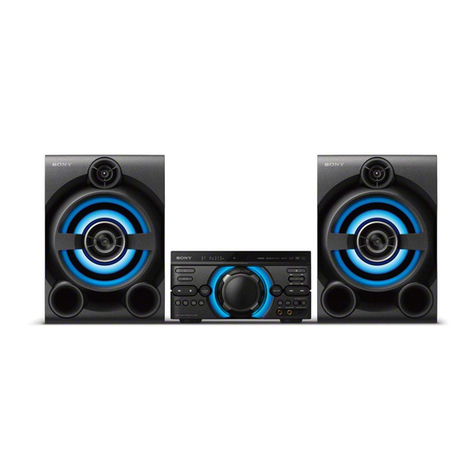2
ATTENTION AU COMPOSANT AYANT RAPPORT
À LA SÉCURITÉ!
LES COMPOSANTS IDENTIFIÉS PAR UNE MARQUE 0
SUR LES DIAGRAMMES SCHÉMATIQUES ET LA LISTE
DES PIÈCES SONT CRITIQUES POUR LA SÉCURITÉ
DE FONCTIONNEMENT. NE REMPLACER CES COM-
POSANTS QUE PAR DES PIÈCES SONY DONT LES
NUMÉROS SONT DONNÉS DANS CE MANUEL OU
DANS LES SUPPLÉMENTS PUBLIÉS PAR SONY.
SAFETY-RELATED COMPONENT WARNING!!
COMPONENTS IDENTIFIED BY MARK 0OR DOTTED
LINE WITH MARK 0ON THE SCHEMATIC DIAGRAMS
AND IN THE PARTS LIST ARE CRITICAL TO SAFE
OPERATION. REPLACE THESE COMPONENTS WITH
SONY PARTS WHOSE PART NUMBERS APPEAR AS
SHOWN IN THIS MANUAL OR IN SUPPLEMENTS PUB-
LISHED BY SONY.
TABLE OF CONTENTS
1. SERVICING NOTES ............................................... 3
2. GENERAL
Location of Controls ....................................................... 4
Setting the Time .............................................................. 5
3. DISASSEMBLY ......................................................... 6
4. DIAGRAMS
4-1. Note for Printed Wiring Boards and
Schematic Diagrams ....................................................... 13
4-2. Schematic Diagram – CD Section (1/4) – ..................... 14
4-3. Schematic Diagram – CD Section (2/4) – ..................... 15
4-4. Schematic Diagram – CD Section (3/4) – ..................... 16
4-5. Schematic Diagram – CD Section (4/4) – ..................... 17
4-6. Printed Wiring Boards – CD Section – ......................... 18
4-7. Printed Wiring Boards – MAIN/TR Boards –............... 19
4-8. Schematic Diagram – MAIN Board (1/4) – .................. 20
4-9. Schematic Diagram – MAIN Board (2/4) – .................. 21
4-10. Schematic Diagram – MAIN Board (3/4) – .................. 22
4-11. Schematic Diagram
– MAIN (4/4)/TR Boards – ............................................ 23
4-12. Schematic Diagram – PANEL Section (1/3) – .............. 24
4-13. Schematic Diagram – PANEL Section (2/3) – .............. 25
4-14. Schematic Diagram – PANEL Section (3/3) – .............. 26
4-15. Printed Wiring Board – PANEL Section – .................... 27
4-16. Printed Wiring Board – AMP Board
(US, Canadian, AEP, UK, Australian models) – ............ 28
4-17. Schematic Diagram – AMP Board
(US, Canadian, AEP, UK, Australian models) – ............ 29
4-18. Printed Wiring Boards
– AMP (E model)/AC/FUSE Boards – ........................... 30
4-19. Schematic Diagram
– AMP (E model)/AC/FUSE Boards –........................... 31
5. EXPLODED VIEWS................................................ 37
6. ELECTRICAL PARTS LIST ............................... 43
General
Po er requirements
North American model: 120 V AC, 60 Hz
European model: 230 V AC, 50/60 Hz
Australian model: 220 – 240 V AC, 50/60 Hz
Mexican model: 120 V AC, 50/60 Hz
Other models: 110 – 120 V or 220 – 240 V
AC, 50/60 Hz
Adjustable ith voltage
selector
Po er consumption
U.S.A. model: 110 atts
Canadian model: 120 atts
European model: 105 atts
Other model: 120 atts
Dimensions ( /h/d)
Approx. 280 x 325 x 418 mm
Mass
U.S.A. model: Approx. 8.1 kg
Canadian model: Approx. 8.1 kg
European model: Approx. 8.2 kg
Other model: Approx. 8.3 kg
Supplied accessories: AM loop antenna (1)
FM lead antenna (1)
Remote Commander (1)
Design and specifications are subject to change
ithout notice.
CAUTION
Use of controls or adjustments or performance of procedures
other than those specified herein may result in hazardous ra-
diation exposure.
This appliance is classified as a CLASS 1 LASER product.
The CLASS 1 LASER PRODUCT MARKING is located on
the rear exterior.
